Chasing Amazing is proud to be participating in “Round 3” of the greatest assembly of comic book blogging talent on the internet – Super Blog Team-Up. After previously talking about times our favorite heroes quit, and famous comic book retcons, now the team has joined forces to talk villains – the good, the bad and the brainless. Considering how I’m never one to shy away from controversy when it comes to Chasing Amazing, I decide to latch on to the latter designation – brainless – and discuss one of the most creatively bereft Spider-Man villains of all-time, Carnage.
Of course you can’t talk Carnage without talking about the most famous storyline he was ever a part of, “Maximum Carnage,” which made its debut in the very first issue of the Spidey “B” series, Spider-Man Unlimited (which means I can now also check off a “One Month” entry out of this whole exercise).
But beyond the multi-tasking element involved with my topic, I also wanted to use the added exposure of the Super Blog Team-Up to provide a more insightful write-up of “Maximum Carnage.” I first attempted to talk “Maximum Carnage” nearly three years ago, but I was never happy with the way that post worked out. I have some very strong opinions about this storyline that are weirdly blurred by the fact that it was released at a critical time in my burgeoning fandom. I don’t think the complexity of my emotions towards “Maximum Carnage” were adequately conveyed in that original post, so I’m hopeful this latest mish mash of words and thoughts will be better articulated.
Besides, three years can dramatically change a person’s perspective on things, even as it relates to a comic book storyline that’s now more than 20 years old.
Using that perspective, very recently I came to the realization that a lot of the issues I have with Carnage and “Maximum Carnage” is rooted in the resentment I have been harboring for Marvel, and the comic book industry in general, during the early 1990s.
I talk about 1990s comics a lot with my Gimmick or Good? column at the Comics Should Be Good blog, which I have been writing for more than a year, so I feel like I can speak to this idea of industry resentment with a little bit more authority now when compared to the first time I scribbled a blog post about “Maximum Carnage.”
In that original post, I dismiss “Maximum Carnage” for its emptiness and repetitiveness. All of these things are undoubtedly true. But as I’ve come to learn after reading and re-reading all of these stories from the 90s about Superman, Batman, Captain America, the X-Men, X-Force, Green Lantern, etc. etc., every major comic book series was pumping out content similarly brainless as “Maximum Carnage.” While the “bottom line” has always been the driving force behind the comic book industry, sales were so outrageously high, and the medium so wildly popular during this time period, that Marvel and DC were just going to keep going back to whatever was generating success for them over and over until things eventually dried up (which they did in the mid-90s when Marvel had to file for bankruptcy).
So all these years later, why should I sit here now complaining about the quality of something that clearly sold well? “Maximum Carnage” was everywhere. There were t-shirts, posters and even a video game (which I obviously owned and played until my thumbs went numb from all of the button mashing). “Maximum Carnage” built off the immense popularity of Spider-Man’s first symbiote-possessed villain, Venom, and managed to suck in fans even more. There’s an entire cult of symbiote fans that exists out there, and “Maximum Carnage” has a lot to do with that.
And I resent it because I was part of the problem. I wasn’t even technically a teenager yet when this “event” first debuted and while I had been reading comic books since I was 7, I still wasn’t 100 percent sure of what I truly “liked” from the medium. I definitely had a connection to Spider-Man, as I always identified with that character more than any other. But I was also 12-years-old, and also found myself to be easily manipulated and swayed by what was popular at the time.
I knew I liked Venom. Venom was one of the first new supervillains created by Marvel when I first started reading Amazing Spider-Man in the late 1980s. So considering how Cletus Kasady became Carnage after he bonded with the “spawn” of Venom’s symbiote costume, it wasn’t difficult to convince me to become a fan of this new guy.
Credit also has to go to Mark Bagley, who often doesn’t get the credit he deserves as a Spider-Man artist. Bagley’s design of Carnage was stunning. He was everything a prepubescent 12-year-old would want in a villain. He was the ultimate power fantasy – a psychologically unhinged individual who was bullied and abused as a kid and got his revenge by becoming this monster.
Let me be clear, I never wanted to BE Carnage (murder is bad, mmmkay?), but I was without question in awe of him. Bagley’s Carnage was an action figure on steroids. He could turn his arms and tendrils into knives and axes. And he was blood red!
What’s weird is that while the character instantly clicked with me once I laid eyes on him, I don’t remember buying any “Maximum Carnage” comics until at least a year or more after they were first released. I’m certain that there was some zero hour moment that inspired this love affair – maybe a classmate brought in one of the comics or I read about Carnage in the latest issue of Wizard (which was more of a sales brochure than an actual price guide). Either way, I have a distinct memory of there being a Saturday afternoon where I made my mom drive me to the local comic book shop so I could pick through his back issues and purchase as many installments of “Maximum Carnage” as the place had in stock.
I read through this comics and … well … that’s precisely it. I don’t remember my initial reaction. I couldn’t have loved it. The whole endeavor was so mindless. The plot of nearly every issue of “Maximum Carnage” could be described this way: Carnage and his gang of loser teammates (seriously, I didn’t recognize or care about a single one of Shriek, Doppleganger, Demongoblin and Carrion) maim and murder a random group of New Yorkers. Spider-Man, Venom and their gang of B-list heroes (until Captain America thankfully shows up) discuss what they’re going to do about Carnage. Spider-Man is conflicted about finding a “permanent” solution to Carnage thinking there’s always a way to be a hero without resorting to killing, while Venom continues to saber-rattle and challenge Spidey’s antiquated views of heroism.
On paper, that’s not a terrible storyline, but “Maximum Carnage” does this 14 times over, including two giant-sized issues in Spider-Man Unlimited #1-2. I have to wonder how much better of a read Maximum Carnage would have been if Marvel had shown some restraint and released the arc in six parts, or maybe only three or four installments. But at that time, people were willing to invest their time and money in 14 issues – people like me. So Marvel went with it.
And to be fair, there were sections of “Maximum Carnage” that, at the time, I found grossly entertaining. Primarily, I really enjoyed Cloak and Dagger’s arc in this story as Dagger appears to have been killed early on by Shriek only to rematerialize within Cloak’s shroud. The splash page of Dagger rushing out may be my favorite visual of the entire event.
Of course this moment would have had even more power if Dagger actually saved the day and helped bring the storyline to an end. But “Maximum Carnage” continues its circuitous march. Things finally look to be wrapped up when Spider-Man uses some unwieldy looking weapon to blast the villain’s with “good vibes” of some story, but no, Carnage fakes his death and rises out of a lake to confront Spider-Man and Venom (the three characters Marvel clearly wanted to feature as the resolution of this story) for one last fight.
Something I always found a bit curious about the way this storyline ends in Spider-Man Unlimited #2 was how after 13 issues of intentionally neglecting to explore Carnage as a character, suddenly all these little tidbits about the villain’s past and his childhood are rammed down the reader’s throats. Years later, the comic reads like one big mea culpa – oh yeah, we should probably have established this guy’s motivations beyond overall “chaos” before using him for 14 straight issues – but it’s also too little too late. Carnage himself tells his cronies that he has no plans and has no motivations. Why should some clichéd plot device introduced at the 11th hour make me think any differently?
As I’m starting to gather steam on the “hate train” for “Maximum Carnage,” I can hear some of the storyline’s fans screaming at me, “Mark, you’re missing the point.” I’ve heard these arguments before, usually any time I take my shots at Carnage: He’s designed to be one-note. He’s designed to be campy. You’re not supposed to sympathize with him. He’s Freddy Krueger as a comic book villain.
I usually try to tell these dissenters that, just because a character is “designed” to be shallow, doesn’t mean we as readers should automatically accept that and be happy with it. Why can’t we get more from a character? Why can’t there be depth? Even brain-eating Venom had more depth than Carnage when he first debuted.
But then I remember I was once one of these people who I’m now dismissing. I was enamored with Carnage. I wanted to read every single comic he was in (and I spent a fair bit of money in the 90s tracking down all of those early appearances).
I think what I resent most about “Maximum Carnage” is how all these years later, I can’t just write my true feelings about the story (It was stupid. It stunk. Who are these people that voted this thing into the top 25 of CSBG’s best Spider-Man story countdown in 2012?) without all of these mealy-mouthed qualifiers. Otherwise I feel like a hypocrite. I feel like I’m betraying a piece of my childhood.
In truth, my feelings for “Maximum Carnage” lack a resolution much in the way that the storyline itself lacks a resolution. It begins, it ends, I felt some things one day, I feel some other things now. But it’s not coherent. It’s not reasonable. It’s chaos. It’s Carnage.
Super Blog Team-Up Roll Call!
The Bronze Age Babies: The Frightful Four (Are Brains Required for this Outfit)
Between the Pages: Two Villains Rules the World of Cakes – Darth Vader & Boba Fett
Fantastiverse: Green Goblin – The Art of Villainy and Madness
Longbox Graveyard: Thanos – Love & Death
SuperHero Satellite: The Great Darkness Saga
Flodos Page: The Villainous Villainies of The Lamp-Lighter
Retroist: Doom of Destiny and Denial
Superior Spider-Talk: Chameleon and Were Peter Parker’s Parents Androids?
Silver Age Sensations: The Voracious Villainy of the Crimson Dynamo
The Unspoken Decade: Godkillers – Doomsday and Bane
The Daily Rios: JLA vs. Beasts

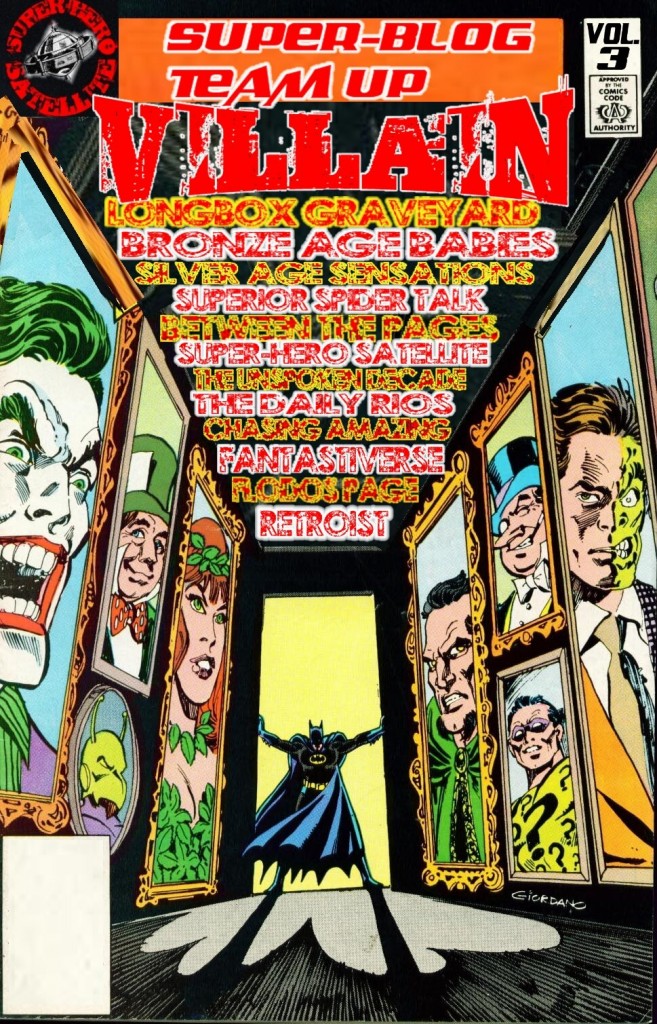
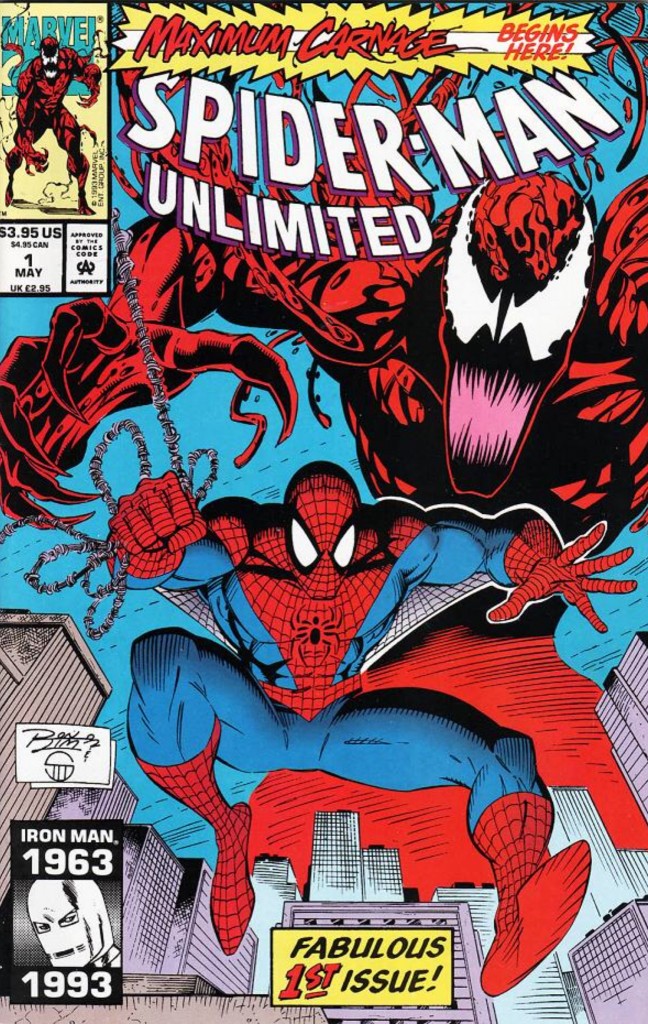
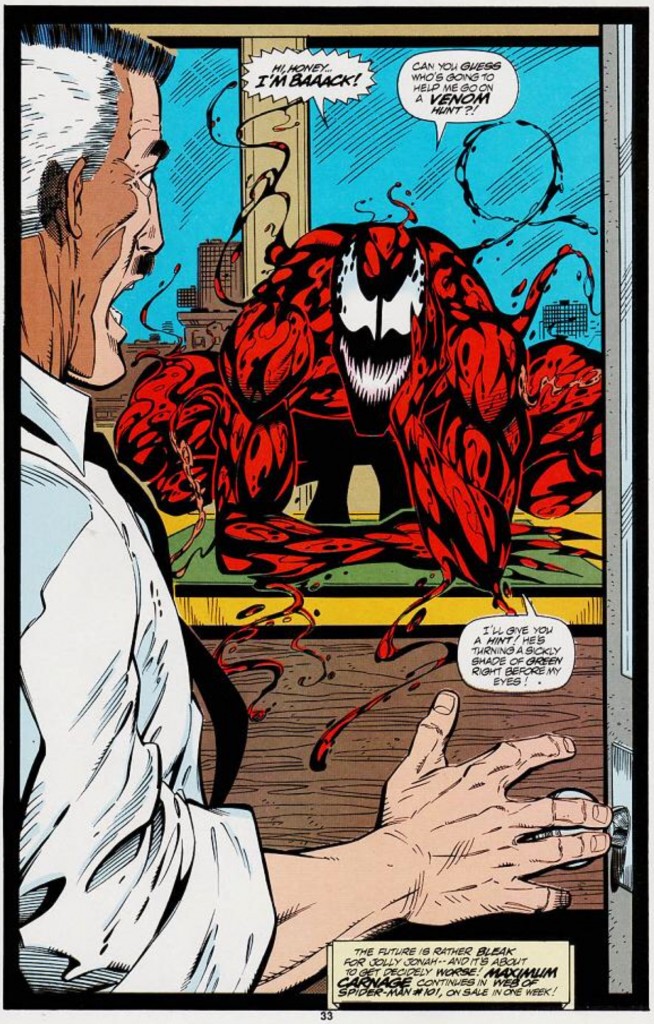
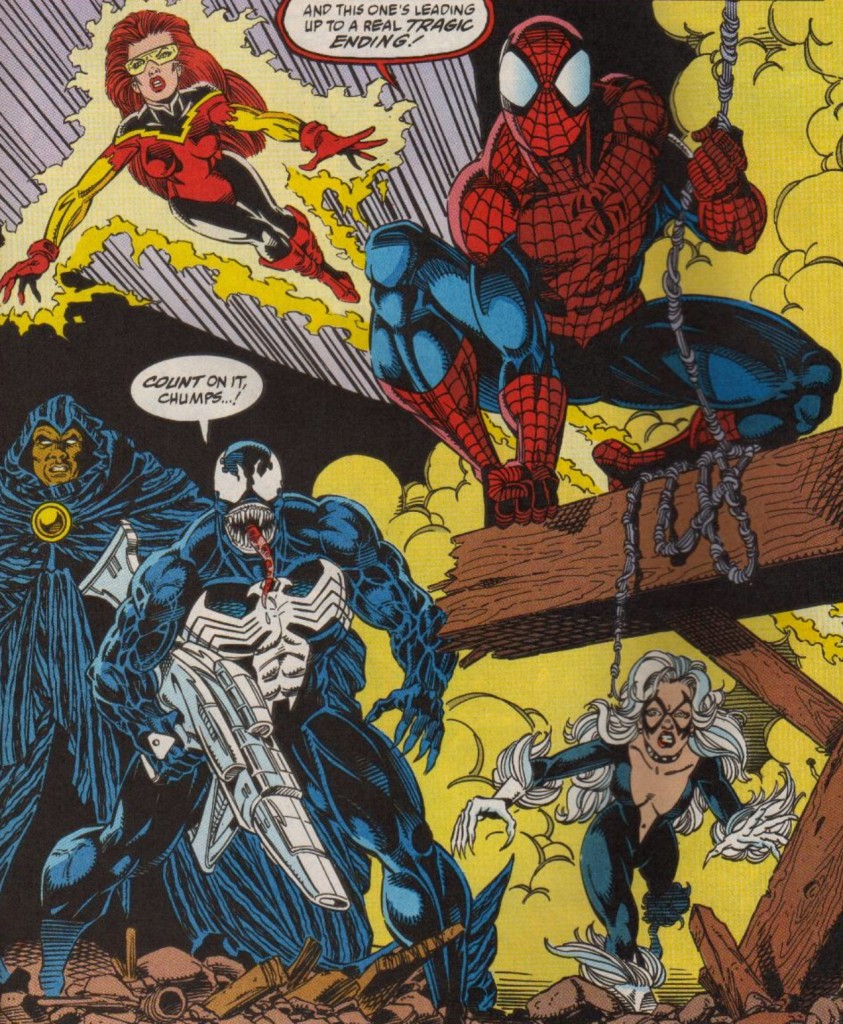
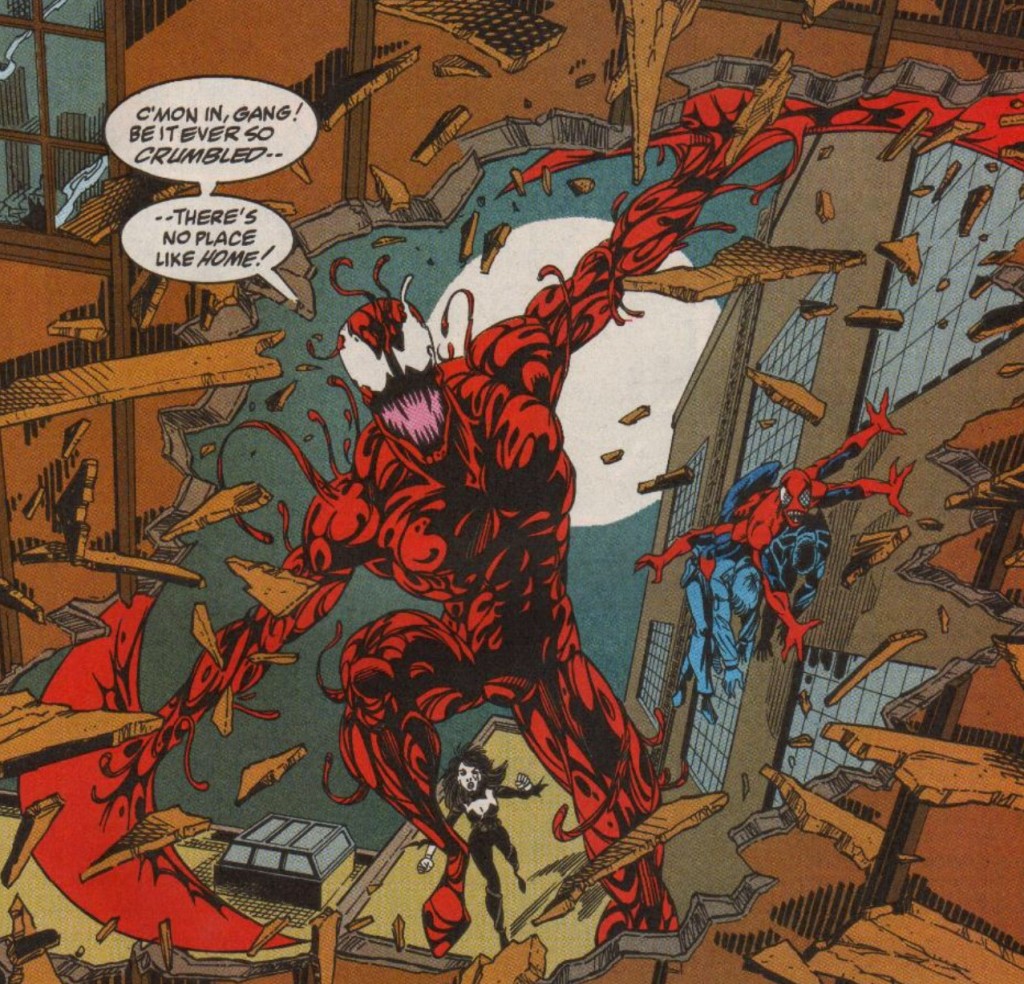
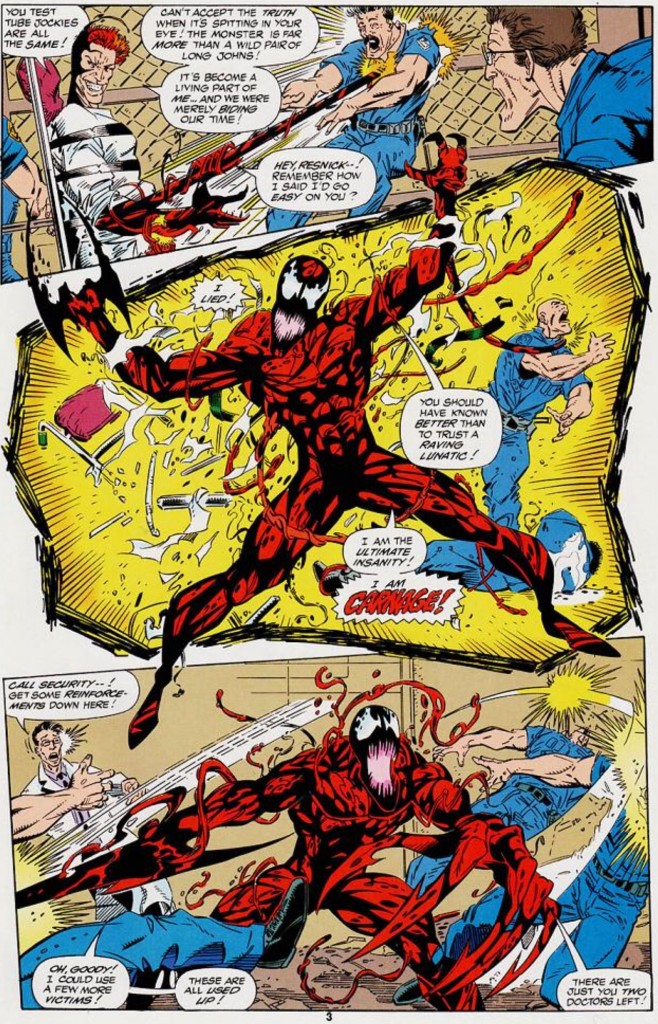
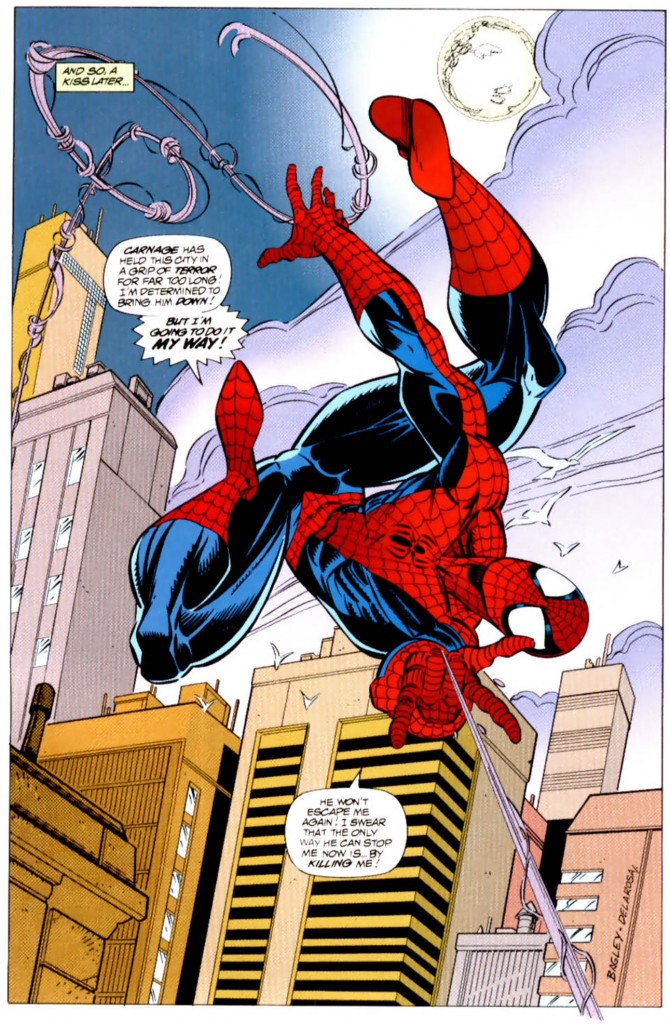
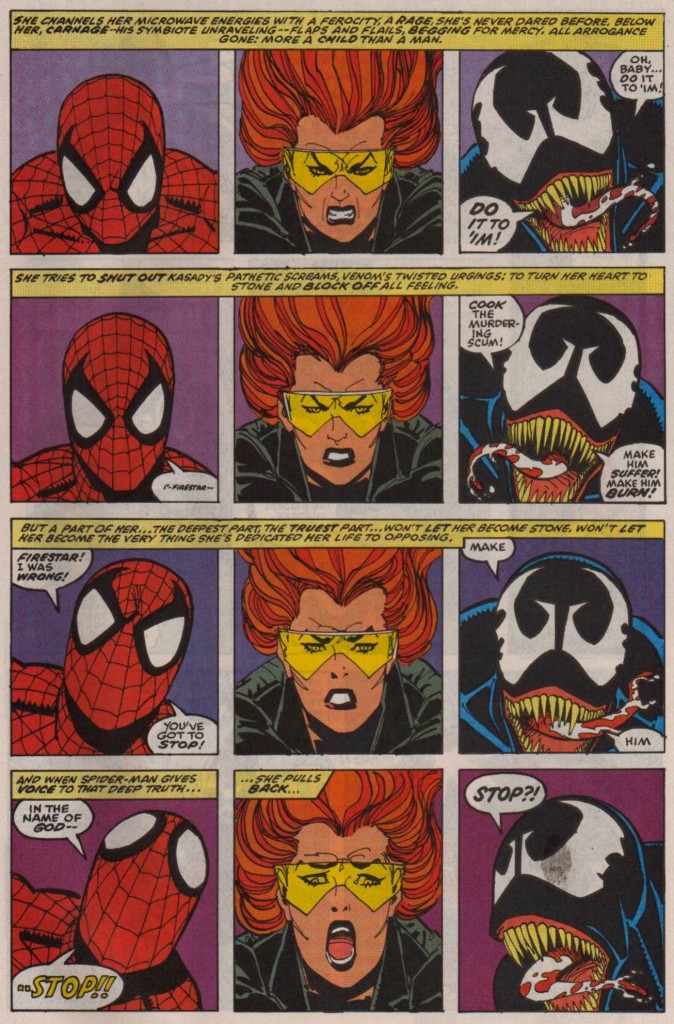
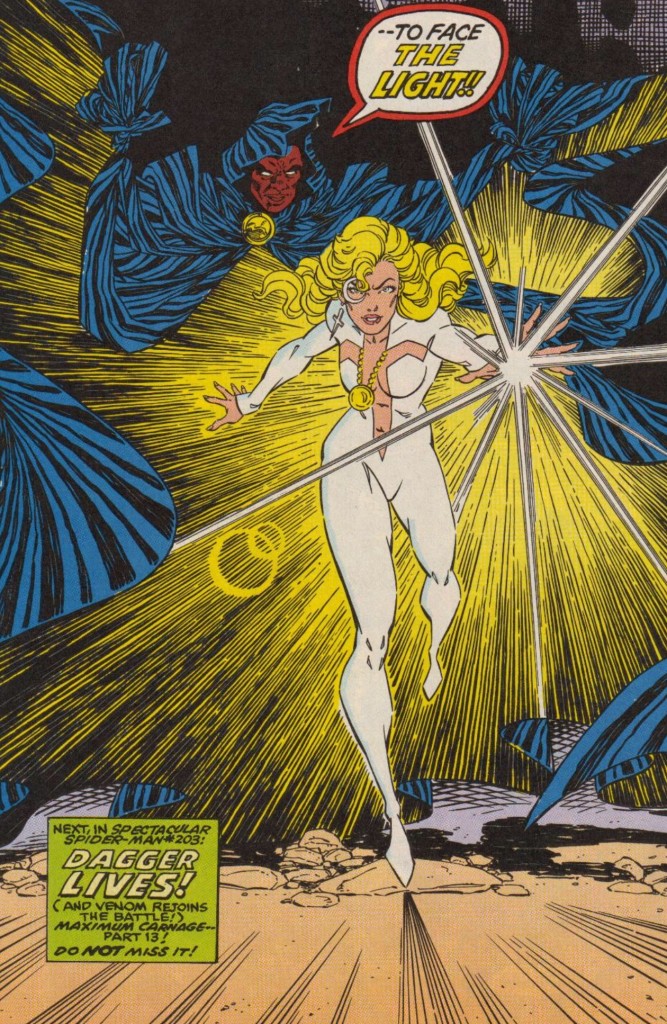

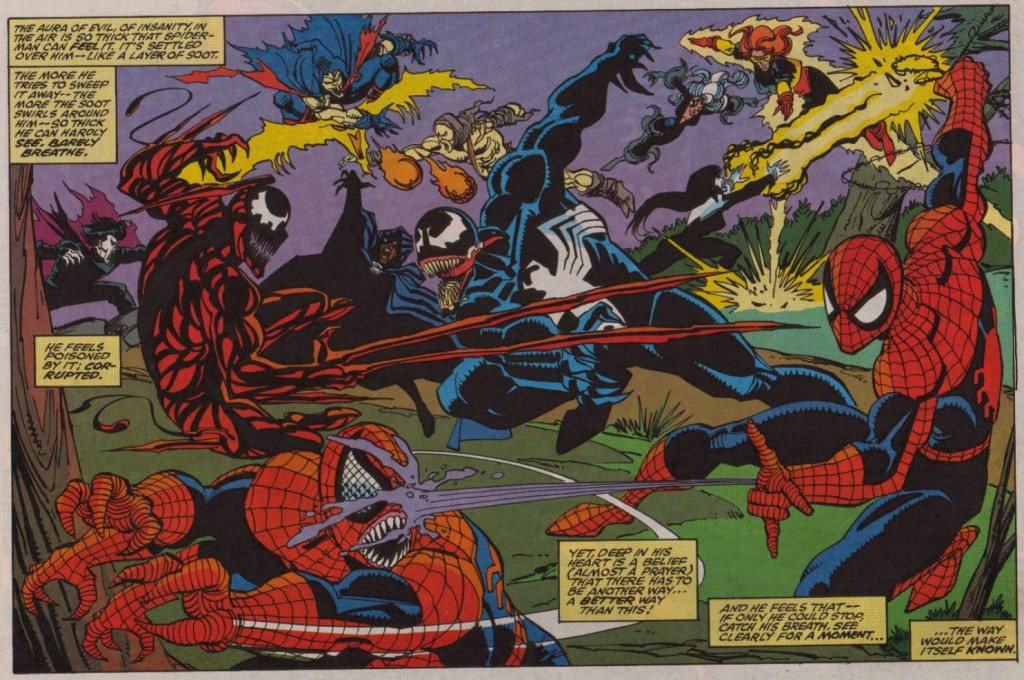

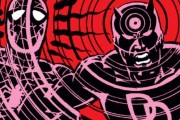
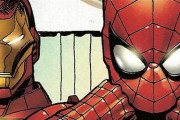
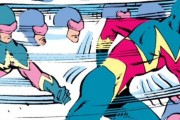
This was splendid, and it was right in my wheelhouse! I recall being in 7th grade when this came out, and we raved about it. We were so excited that Spider-Man Unlimited was coming out, and we loved that game. I rented Maximum Carnage for a party I was having, and I am certain that very few other games made it into the SNES that night.
I liked all the B-Listers helping Spider-Man, but I am sort of a mark for less-highlighted characters. I don’t understand why Firestar was there, but not the rest of the New Warriors. Doesn’t part of the FF eventually get involved as well?
If you read my blog, and I know a savvy guy like you does, you will see that the most over-rused trope of the 90’s wasn’t giant guns, instead, it was the ‘DO I KILL OR NOT I AM SO CONFLICTED” thing that permeated every title that didn’t feature a cold-blooded and un-contrite killer, e.g. Punisher. I am unsurprised to see it here, and that just makes the trope more tiresome than I already found it.
Once again, great article!
I don’t think you can hold yourself accountable for your taste or lack thereof when you were 12. Even in 1993 there were plenty of dudes in their 20s and older who should have known better who were buying this crap. (Just as they still are).
I never mind too much about these storylines and characters I don’t like. I just pretend they never happened, and when they show up in a contemporary comic I happen to be reading, I either give them a chance if I am interested, or simply skip those issues. I long ago gave up on any need to be a completist. Life is too short and bad comics too many. 🙂
I am going to have to disagree with you on one this though, save for that one Cloak & Dagger panel you posted, the art in this series looks pretty bad and Carnage’s design seems terrible to me (Venom, too – but that is another character I usually ignore – ironically, enough however, I like Anti-Venom – one of these days I am going to write about Web of Spider-Man #1 and what should have been the actual death of the symbiote).
Anyway, I can totally understand the conflicted feelings regarding comics of our youth that we either liked or felt compelled to buy. . . My advice is to not sweat it too much. Don’t like it now? Get rid of it.
P.S. made my way here through Bronze Age Babies and the Super-Blog Team-Up.
Miscellaneous thoughts and fun facts about Maximum Carnage:
(1) Really really really good game and something I still play to this day on an old SNES hookup at my uncle’s house. The repetitive nature of the storyline works much better in a beat-em-up video game than in the comic. The repeat fights become like practice for later stages, and in fact I would say the game had more variety than the comic (e.g. fighting the Fantastic Four’s security bots). The difficulty also makes winning immensely satisfying.
(2) According to the “Life of Reilly” blog posts, this crossover was referred to within the Spider-Man editorial offices as “Maximum Garbage.” Later Maximum Clonage would earn the moniker “Maximum Bonage.”
(3) I’ve reread this as an adult within the last five years, along with the Clone Saga. They’re both very bad, but for me the Clone Saga is worse by a wide margin. At least the parameters of this story were clear. Carnage bad, tough guy, must beat. The Clone Saga never had a clear direction and was constantly undoing the previous chapter. Carnage may have been tedious, but the Clone Saga was actively infuriating.
(4) It might have been on your podcast (although I’m thinking it was Word Balloon) but Mark Bagley has said somewhere on record that he HATES drawing Carnage. Something about the pools of black being very difficult to draw.
Points for quoting our podcast Cass. Yeah, Bagley does indeed hate drawing Carnage. He originally did the design in all black with a red “bloodhole” in the center that Marvel thought was too intense for kid-friendly Spidey.
I’ve been re-reading the Clone Saga and I think there are some arcs within it that are actually fairly entertaining. As a whole, it’s a disaster, but it’s like picking poisons with some of these 90s stories.
I’m another Bronze Age Baby checking things out. I agree with you on Maximum Carnage vs. the Clone saga: at least the Clone saga had individual stories that were good, even if the story as a whole was garbage; Maximum Carnage was just crap from beginning to end.
I also agree with you about Bagley’s art…I loved his New Warriors stuff and I was glad when he moved over to Spidey.
Mark, great post!
I’m one of the older guys (I’d have been mid-20s when this storyline saw print), but I don’t think that I bought into this. Although a confessed completist, I saw this for what it was. And all of your railing against the marketing in the chase of the almighty dollar is spot on. Really, this era was the beginning of my loathing of modern comics. Granted, it took me another decade to get all the way out, but Maximum Carnage and its ilk served as splendid ushers to the sidelines.
Doug